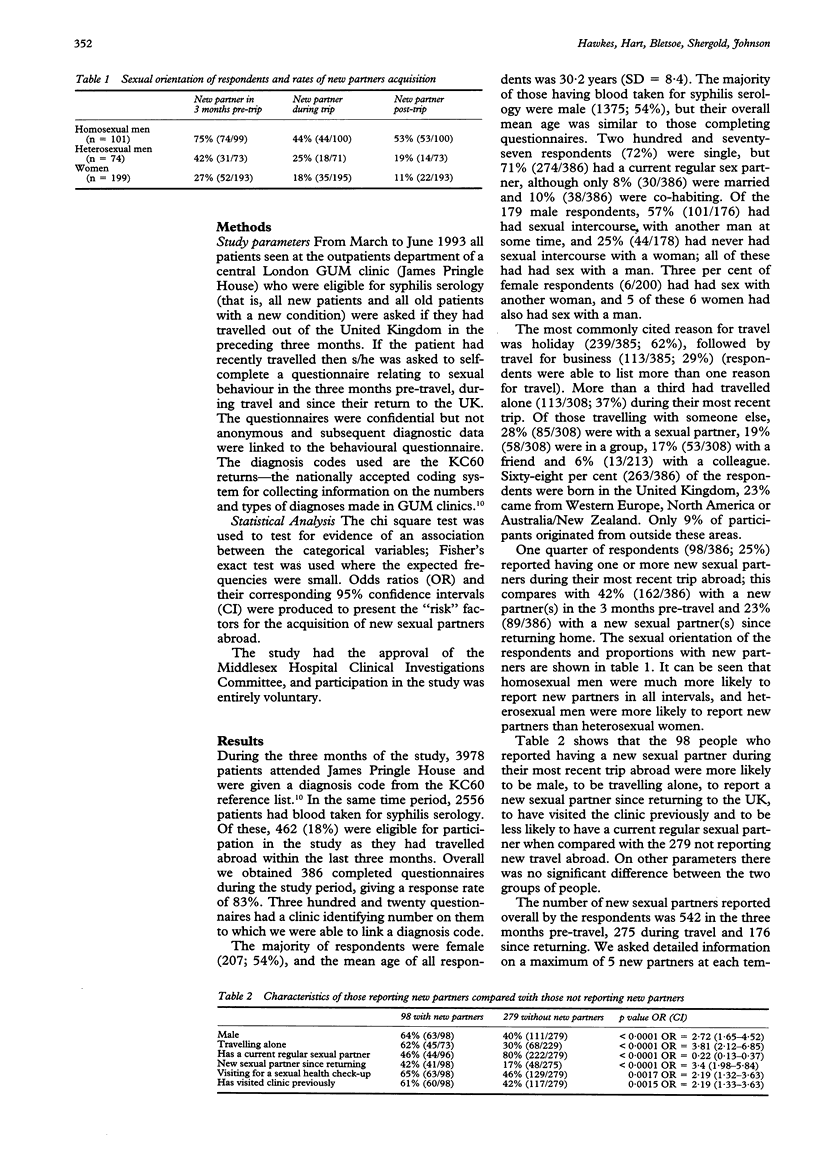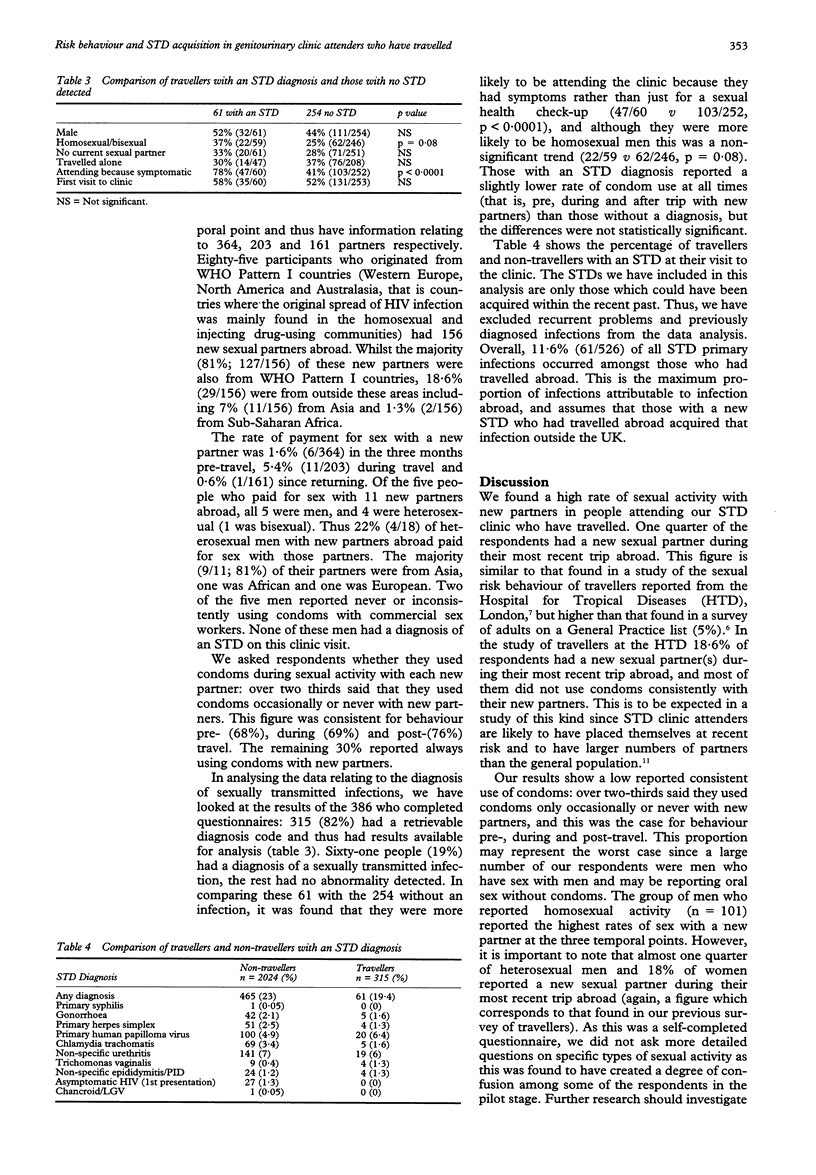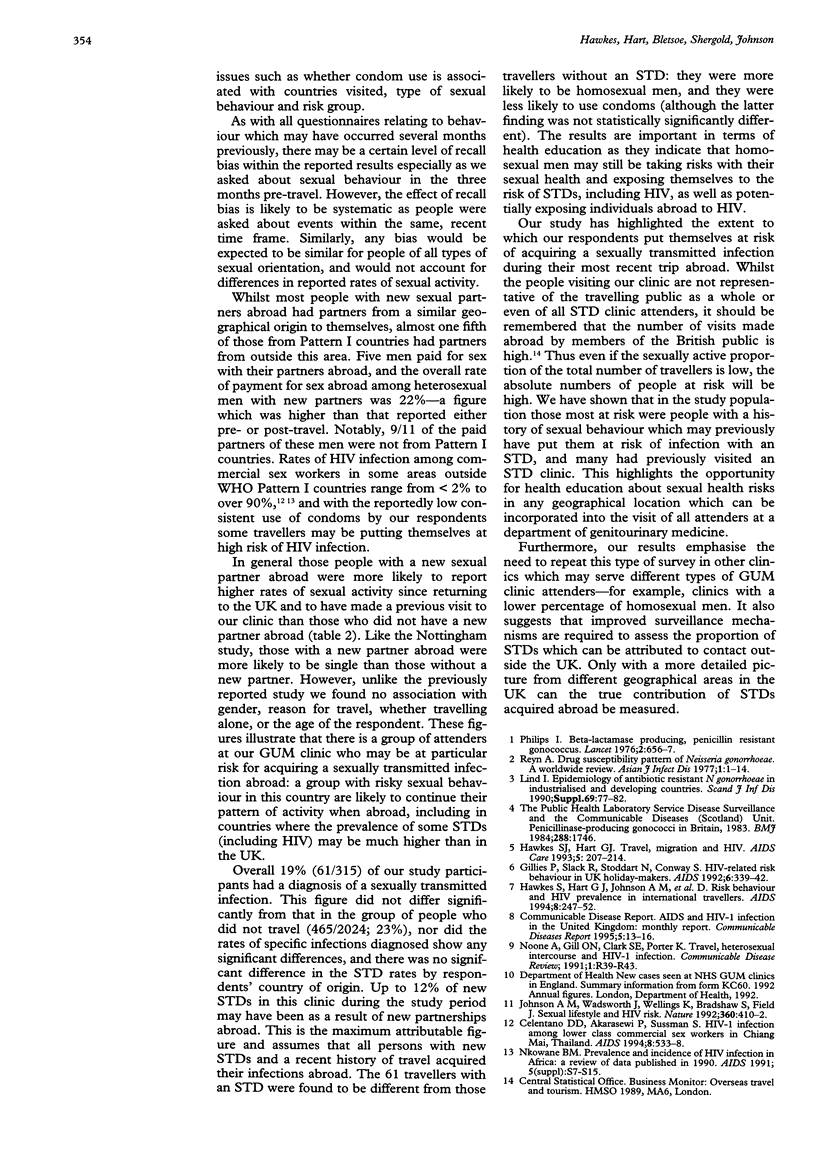Abstract
OBJECTIVE--To investigate the travel history of clients presenting at a genitourinary medicine (GUM) clinic in order to assess the contribution made by sexual partnerships abroad to STD transmission in the UK. SUBJECTS--386 old and new clients who attended during a 3-month period and who had travelled abroad in the 3 months preceding their visit. METHODS--All participating clients self-completed a confidential questionnaire, the results of which were then linked to their clinical diagnosis (if any). RESULTS--25% of participants reported a new sexual partner during their most recent trip abroad. In comparison to those not reporting a new partner, they were more likely to be male, travelling alone, to have visited the clinic previously and to have no regular sexual partner. Two-thirds reported never or inconsistently using condoms with these new partners. A total of 11.6% of the STDs diagnosed in the study participants may have been acquired abroad. CONCLUSION--We have found a high rate of new sexual relationships reported by attendees at our GUM clinic, and a low rate of reported condom use. With high HIV incidence rates in many tourist regions, the need for further studies to establish the true extent of imported STDs in the UK is a priority, and primary prevention campaigns to inform travellers are of paramount importance.
Full text
PDF



Selected References
These references are in PubMed. This may not be the complete list of references from this article.
- Celentano D. D., Akarasewi P., Sussman L., Suprasert S., Matanasarawoot A., Wright N. H., Theetranont C., Nelson K. E. HIV-1 infection among lower class commercial sex workers in Chiang Mai, Thailand. AIDS. 1994 Apr;8(4):533–537. doi: 10.1097/00002030-199404000-00018. [DOI] [PubMed] [Google Scholar]
- Gillies P., Slack R., Stoddart N., Conway S. HIV-related risk behaviour in UK holiday-makers. AIDS. 1992 Mar;6(3):339–341. [PubMed] [Google Scholar]
- Hawkes S. J., Hart G. J. Travel, migration and HIV. AIDS Care. 1993;5(2):207–214. doi: 10.1080/09540129308258601. [DOI] [PubMed] [Google Scholar]
- Hawkes S., Hart G. J., Johnson A. M., Shergold C., Ross E., Herbert K. M., Mortimer P., Parry J. V., Mabey D. Risk behaviour and HIV prevalence in international travellers. AIDS. 1994 Feb;8(2):247–252. doi: 10.1097/00002030-199402000-00013. [DOI] [PubMed] [Google Scholar]
- Johnson A. M., Wadsworth J., Wellings K., Bradshaw S., Field J. Sexual lifestyles and HIV risk. Nature. 1992 Dec 3;360(6403):410–412. doi: 10.1038/360410a0. [DOI] [PubMed] [Google Scholar]
- Lind I. Epidemiology of antibiotic resistant Neisseria gonorrhoeae in industrialized and developing countries. Scand J Infect Dis Suppl. 1990;69:77–82. [PubMed] [Google Scholar]
- Nkowane B. M. Prevalence and incidence of HIV infection in Africa: a review of data published in 1990. AIDS. 1991;5 (Suppl 1):S7–15. [PubMed] [Google Scholar]
- Noone A., Gill O. N., Clarke S. E., Porter K. Travel, heterosexual intercourse and HIV-1 infection. CDR (Lond Engl Rev) 1991 Mar 29;1(4):R39–R43. [PubMed] [Google Scholar]
- Phillips I. Beta-lactamase-producing, penicillin-resistant gonococcus. Lancet. 1976 Sep 25;2(7987):656–657. doi: 10.1016/s0140-6736(76)92466-1. [DOI] [PubMed] [Google Scholar]


